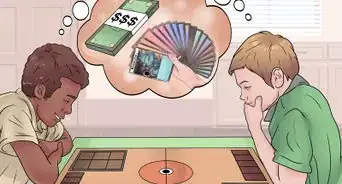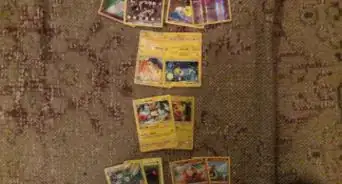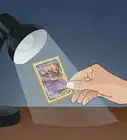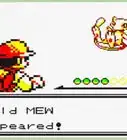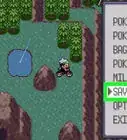This article was co-authored by Madeleine Flamiano. Madeleine Flamiano is a Role-playing Game Enthusiast based in Berkeley, California. She has over 20 years of gaming experience and is an avid gamer in all parts of her life—she's especially fond of tabletop board games and the world of Pokémon. Pokémon Crystal Version is her favorite game in the franchise. Some of her greatest feats were evolving Eevee to a Level 99 Umbreon and collecting every legendary bird Pokémon. Her professional path started at NaNoWriMo, where she scripted a summer-long world-building series and hosted its Virtual Write-Ins. She has written seven books for DDCO Publishing, which specializes in LitRPG and is operated by New York Times Bestseller JA Cipriano. She has ranked in the Top 100 list for Dark Fantasy, Sword & Sorcery, and Fantasy Romance. She was voted by her peers as "The Perfectionist" on Roleplay Adventures, a SERP for forum roleplaying. Madeleine graduated from Mills College with a B.A. in English with a concentration in Literature and a Minor in Philosophy.
There are 19 references cited in this article, which can be found at the bottom of the page.
This article has been viewed 368,828 times.
If you play the Pokémon card game and follow the Pokémon catch phrase, "Gotta catch 'em all," you may have quite a few Pokémon cards on your hands! By organizing your Pokémon cards, you'll have a much easier time finding a card when you are looking for it. An organized collection will also help you keep tabs on cards so you don't accidentally buy one you already have. To put your Pokémon cards in order, all you need is the right storage, organization, and a little bit of time.
Steps
Choosing Your Method of Organization
-
1Organize by deck boxes. This system works well if you are still building your collection and most of your cards are collected into decks. Simply place your cards into an empty deck box and place the box somewhere convenient, like on a shelf or in your closet.
- Since you've likely started to change your decks to be stronger when playing, you may want to name or label your decks so you know exactly what each box contains. For example, you might put a piece of tape on a box and write on the tape, "Psychic Pokémon Deck."
-
2Use a binder.[1] There are many card collecting games similar to the Pokémon TCG (trading card game). These have frequently made use of binders, and this method of organization might be right for you. This format will allow a clear view of your cards and easy access. It will also protect your cards from damage, like bending and mold.
- These trading card binders are often filled with plastic inserts which have pockets for your cards. You can buy inserts like this from your local board game/hobby store.
- You might also make use of tabs to help you easily navigate your binder. Binder tabs can be bought at most office supply stores.
- You can make your own simple tab by fastening a piece of tape to the front and back of your plastic insert, allowing some extra tape to stick out from your binder. Then write the heading on your tab, for example, you might write, "Type: Grass."
Advertisement -
3File cards away into a card catalog. This method is best for serious collectors who have thousands of cards to keep track of.[2] A card catalog is usually a large, wooden piece of furniture filled with narrow drawers into which you can put cards.[3] [4] You can find card catalogs at flea markets, garage sales, eBay, CraigsList, and antique stores, though antique catalogs may be expensive.
- If you purchase your card catalog secondhand, you should inspect it carefully. Many of these are old, and you might have to spend some time or money restoring it to hold your cards safely and securely.
-
4Separate cards into storage boxes. You can buy narrow box-sleeves that are designed to hold your cards at your local game/hobby store, office supply store, or online. There are also larger boxes intended specifically for storing trading cards that you could easily use for your Pokémon cards.[5] After you organize your cards you can store your collection in these boxes, you can label each box according to your system of organization. For example, you might label one box, "Fighting Type," and another "High HP Pokémon."
By Set
-
1Locate the symbol. Most Pokémon cards have a symbol below the bottom right corner of the Pokémon's image. This symbol identifies the set. Some examples of set symbols include a flower (Jungle set, #2), a hollow star (Neo Genesis set, #8), and the letter 'R' (Team Rocket set, #5).[6] Sets are usually released four times a year.
- If you have purchased cards from Pokémon International, or possess cards from this series, the set information will be located in lower right hand corner at the bottom of your card. These symbols can be small and easy to miss; look carefully!
-
2Separate your cards by set symbol and number. It'll be easy for you to group all like symbol cards together, but for further organization you'll need to arrange by set number. Each set has a designated number of cards, and each card is numbered within its set. This will help you organize your cards with even greater precision.
- You may need to use an online card directory to determine each cards position in a set. Many online set directories will first require you to choose the set category (like Base, Aquapolis, and Jungle) before linking you to the card number directory.
- The base set of the first cards released in English do not have a symbol. You may want to gather these cards together and arrange them according to HP (hit points) or alphabetic order.
-
3Look for "secret rare" cards. Within sets, there are sometimes special cards that have a number higher than the set directory lists. These are "secret rare" cards. For example, you may see a card that is 63/62. This is not an error; this means that you have a special card.
-
4Collect promotional cards together. You'll find that some of your cards only have a card number and no set number. This indicates that the card is a promotional card, also referred to as a "promo." These are frequently given as a bonus to players when they purchase a deck.
- Although promotional cards have no set number, you can still organize these according to card number or release date. You'll have to look up this information online, as there are many promo cards, each with a different number and release date.[7]
- You should also keep an eye out for "black star promos." These are extra special cards that are produced specifically for promotional events.
-
5Place cards in your storage container. Depending on which method of storage you have chosen, this may be a binder, a box-sleeve, or even a card catalog. Now that your cards are organized by set, you can insert these into your storage container to complete your organization.
- If you are using a binder, make sure the card slots are big enough for your Pokémon cards. Some card binders are intended for smaller cards, and trying to fit your Pokémon cards in these might cause your cards to bend or otherwise deform.
- When organizing your cards by set, trust the set symbols and number, even if the Pokémon on the card appears to be the same. Charizard from the Dragon Frontiers set and Charizard from the Power Keepers set have different numbers, pictures, and abilities.[8] [9]
By Evolution
-
1Gather each evolution in a separate stack. Most Pokémon evolve into a stronger form when a certain level is attained or a special item is used.[10] Go through your Pokémon cards and pick out all Pokémon that are in the same evolutionary series. Start with the lowest evolution Pokémon and put all higher evolutions together with it. This will likely create many stacks, depending on the volume of your collection.
- While many Pokémon evolve, some do not. All single evolution Pokémon can be grouped together.[11]
-
2Organize your evolutionary groups. Now that your cards are separated by evolution, you should think about how you want to organize these groups. You might want to alphabetize your evolutions, or you could group these according to type, keeping all like-type evolutions together.
- Even if you divide your evolutions into like-type categories, it can still be difficult to easily find evolutions within the type grouping. To further organize your like-type sets, you might want to alphabetize all evolutions within like-type sets.[12]
-
3Insert your cards into your binder, box, or catalog. Place your cards into your binder, box-sleeve, or catalog according to your evolutionary organization. To make sure your cards are easily accessible, you may want to create sections in your binder, use separate boxes, or use different drawers for each category you have organized your evolutions into.
- For example, if you are using box-sleeves, you might keep all your fire evolutions together and label the box "Fire Types." If you've chosen to use a binder, you can create section dividers to keep types separate with tabs.[13]
By National Number
-
1Find the national Pokédex number. Even if you aren't a fan of the animated series or the Pokémon video games, you probably know that in the Pokémon universe trainers have a special device called a Pokédex. The Pokédex is a kind of Pokémon dictionary, and it lists a number for each Pokémon.[14] You can use this number to organize your Pokémon.
- In the Pokémon TCG, you can sometimes find the national number in the information below the picture of the Pokémon card or in the bottom left hand corner of the card. Some cards will not have the national Pokédex number written.[15]
-
2Search online for the national number, if necessary. An online Pokédex exists, as well computer and mobile device apps, and you can use any of these to search for national numbers of the Pokémon you are trying to organize.[16] [17] [18] You might be able to speed the sorting process by writing down each Pokémon card you own, looking up the number, and writing the number next to the name.
-
3Separate cards by national number. Organizing your cards by Pokedex number is especially useful if you are a card collector. The numbers make referencing your collection simple and straightforward. However, for active Pokémon TCG players, this may not be the best option for deck-building and playing.
-
4Store your cards by national number. Now that your cards are organized by Pokédex number, all you need to do is put your cards in your container/binder in order. You can group cards you have multiple copies of together, or if using a binder, you may be able to put duplicates into the same card pocket of your plastic insert.
- You should be aware that putting several cards in the same plastic pocket in your binder could cause damage to the card. If the condition of the card is important to you, you should never have more than one card per plastic card pocket in your binder.
- You may want to leave space in your container for cards that you know you are missing. This will make it easier to add any new cards that you get.
By Type
-
1Identify cards by type. The basic Pokémon types are: bug, dark, dragon, electric, fairy, fighting, fire, flying, ghost, grass, ground, ice, poison, psychic, rock, steel, and water.[19] However, there are also special types and hybrids, flying/ice to give one example. Collect all like-type Pokémon in one section apiece.[20]
- Organizing by type is one of the more popular ways to organize cards for active players of the Pokémon TCG. This is because you can easily search your collection for useful type combinations.
-
2Arrange your cards within types. Even after separating your cards by type, if you have many cards it will be difficult to navigate your type groupings without a little more organization.[21] You should create a sub-category within your type groups. You can do this by ordering the cards alphabetically or by national number, to name two options.
-
3Archive your cards in a container.[22] You'll have to decide the order you'll store your sorted Pokémon types. You may want to do this alphabetically, with bug coming first, then dark, then dragon, and so on. If you are an active player, you may want to have your most used type first, followed by your second most used type, and so on.
By Rarity
-
1Group your cards according to rarity. Organizing cards by rarity is another good method for collectors to use, as it organizes cards by relative financial value. This will make it easier for you to evaluate the worth of your card collection. Gather all cards of similar rarity into groups together.
- Symbols in the bottom right corner of the card will indicate its rarity. A circle represents common cards, diamond uncommon, and star rare.[23]
-
2Arrange your rare card groupings. You might use an alphabetic, national Pokédex number, or HP (hit point) system to further organize your rare card groups. If you are a player and collector, you may find that separating your rare card groupings into type, then arranging types by number or alphabetic order, works best.[24]
-
3Pack away your cards. You'll probably want to separate binders, boxes, or drawers to keep different rarity groupings separate. An alternative to this would be to store your cards in your container and then use tabs to create sections for the different varieties of rare card.[25]
- Even if you're using box-sleeves, you may want to keep your rare cards on hand so you can show these off to friends and other collectors. To keep your rare cards visible, you could put your rare cards in a binder that has plastic inserts with pockets for your cards.
- To further protect rare cards, you might want to encase each in a special plastic card sleeve intended to keep rare cards pristine. These protectors will be 2.5 in. by 3.5 in. (64mm by 89mm) in size, and can be bought at your local hobby store.
Community Q&A
-
QuestionHow do I create pokemon card holders?
 Community AnswerYou could try an internet search for DiY trading card containers. Even if the product is not intended for Pokémon cards, most cards are the same size as them.
Community AnswerYou could try an internet search for DiY trading card containers. Even if the product is not intended for Pokémon cards, most cards are the same size as them. -
QuestionWhere would I put trainer cards and energy cards?
 Community AnswerYou could put the energy of each type in front before the Pokemon, and you can put trainer cards in the very back of your journal.
Community AnswerYou could put the energy of each type in front before the Pokemon, and you can put trainer cards in the very back of your journal. -
QuestionIs stage 1 card better than basic?
 Community AnswerA stage 1 Pokémon card can be placed over a basic Pokémon card. Whether or not it is "better" depends on the situation.
Community AnswerA stage 1 Pokémon card can be placed over a basic Pokémon card. Whether or not it is "better" depends on the situation.
Warnings
- Holographic cards can become faded or easily damaged by regular play. You should consider using a plastic card cover/protector to keep your holographs in good condition.⧼thumbs_response⧽
- Be careful when purchasing cards online. Some cards have an over-inflated value, and others may be forgeries.⧼thumbs_response⧽
Things You'll Need
- Pokémon cards
- Storage container (like a binder, box, or catalog)
- Card holder inserts (for binder; 2.5 in. by 3.5 in. (64mm by 89mm))
- Individual card sleeves (optional)
References
- ↑ http://www.cardboardconnection.com/5-easy-steps-organize-sports-cards
- ↑ http://www.gatheringmagic.com/collections-storage-bruce-richard-01042013-card-management-a-k-a-how-you-find-your-cards/
- ↑ http://www.dictionary.com/browse/card-catalog
- ↑ http://www.smithsonianmag.com/smart-news/card-catalog-dead-180956823/?no-ist
- ↑ http://www.cardboardconnection.com/5-easy-steps-organize-sports-cards
- ↑ http://www.serebii.net/card/english.shtml
- ↑ http://www.psypokes.com/tcg/sets/wotcpromo
- ↑ http://www.psypokes.com/tcg/sets/exdf
- ↑ http://www.psypokes.com/tcg/sets/expk
- ↑ http://www.happychild.org.uk/supercoolzone/pokemon/evolution/
- ↑ http://pokemondb.net/evolution/none
- ↑ http://www.tradingcardcentral.com/organize_cards.php
- ↑ http://www.cardboardconnection.com/5-easy-steps-organize-sports-cards
- ↑ http://www.serebii.net/platinum/nationaldex.shtml
- ↑ http://orig10.deviantart.net/4cc6/f/2015/175/6/1/white_gengar_ex_custom_pokemon_card_by_xjekyllhyde-d8ynhb3.jpg
- ↑ http://www.pokemon.com/us/pokedex/
- ↑ https://www.microsoft.com/en-us/store/apps/xpck-pokedex/9wzdncrcsgbv
- ↑ http://www.ign.com/articles/2012/12/10/official-pokedex-app-coming-to-ios
- ↑ http://pokemondb.net/type
- ↑ http://heavy.com/games/2015/01/top-best-pokemon-cards-values-where-to-buy-2/
- ↑ http://www.gatheringmagic.com/collections-storage-bruce-richard-01042013-card-management-a-k-a-how-you-find-your-cards/
- ↑ http://www.cardboardconnection.com/5-easy-steps-organize-sports-cards
- ↑ https://bestcardgames.wordpress.com/2015/09/07/the-value-of-pokemon-cards-and-why-you-should-have-them/
- ↑ http://www.tradingcardcentral.com/organize_cards.php
- ↑ http://www.cardboardconnection.com/5-easy-steps-organize-sports-cards
About This Article
There are many options for you to organize your Pokemon cards, including by set, evolution, or by national number. If you want to organize them by set, look for the symbol below the Pokemon picture, which will tell you the set that your card belongs to. For example, you may have a flower, which indicates the Jungle set, or a hollow star, which indicates the Neo Genesis set. Then, organize your cards into set groups. Alternatively, pick out all of the Pokemon that are in the same evolutionary series and arrange them with the lowest Pokemon first. Once you’ve sorted your cards into evolutionary groups, decide how you want to arrange them, such as alphabetically. If you want to arrange them by national number, look in a Pokedex to find the national number for each card. You can also search online for the national number. For tips on how to organize your Pokemon cards by rarity, keep reading!
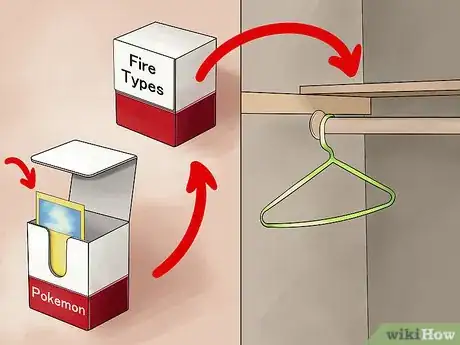








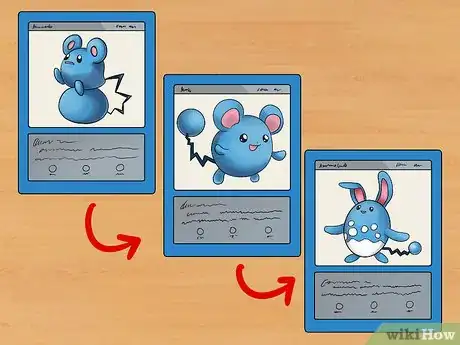


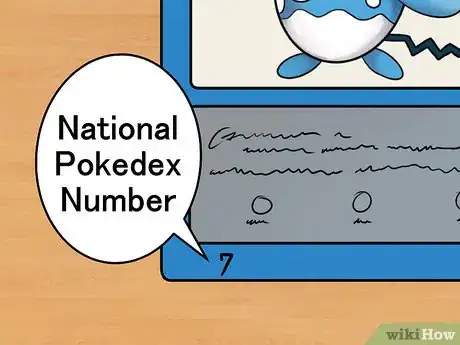
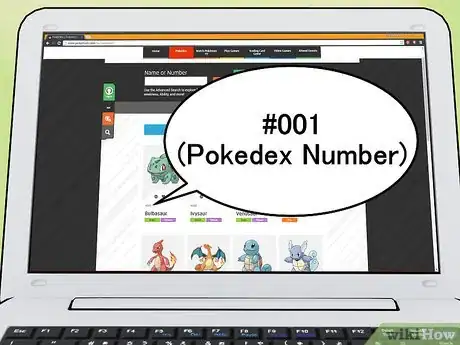

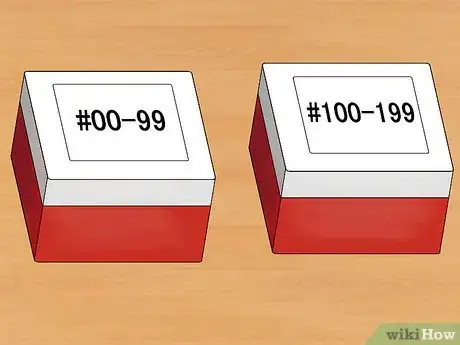




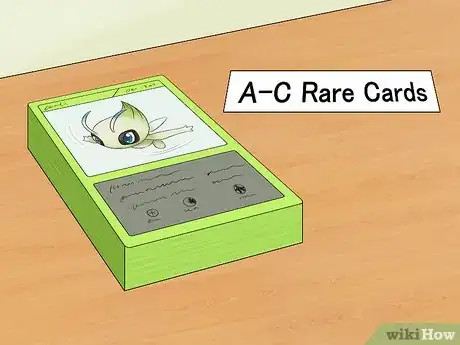


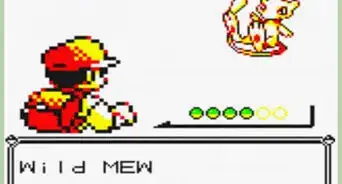
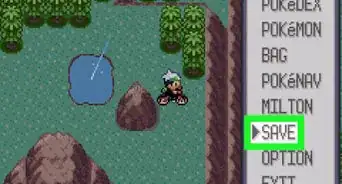

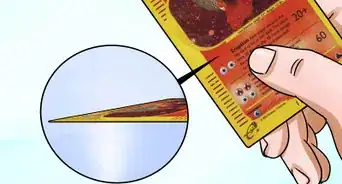
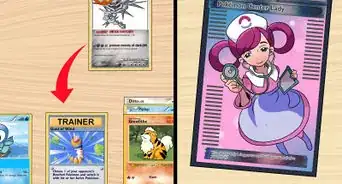
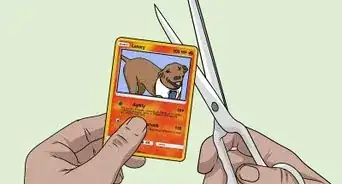


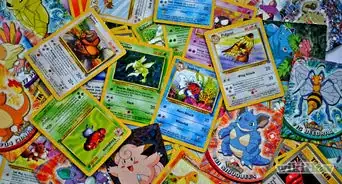
-Step-8.webp)
